

| The garter snakes found in Washington can be locally common as these range maps demonstrate
for the Common, Northwestern, and Western garter snakes. |
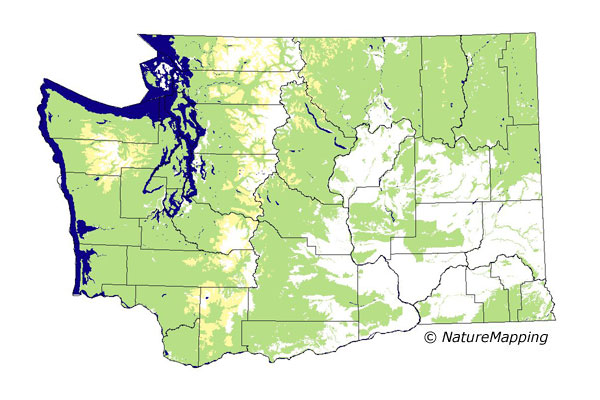 |
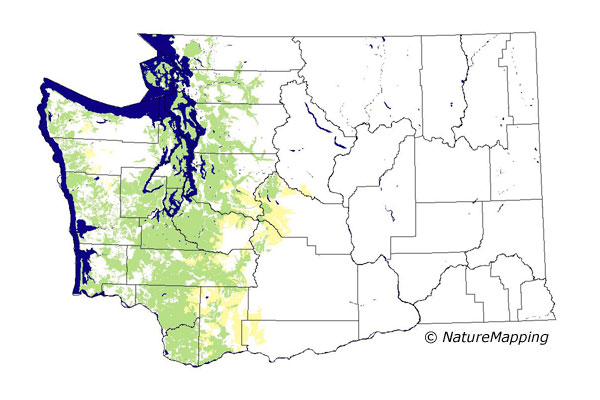 |
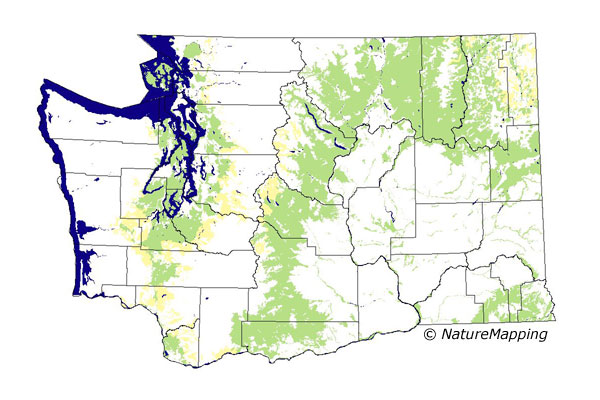 | Common Garter Snake | Northwestern Garter Snake | Western Terrestrial Garter Snake |
With a little practice, identifying the three different species can be as easy as counting scales.
By looking more closely at the head and specifically the row of scales along the upper lip (called labial scales), you can narrow down the species of garter snake.

|
|
Can you identify the snake based on information listed on this page? |
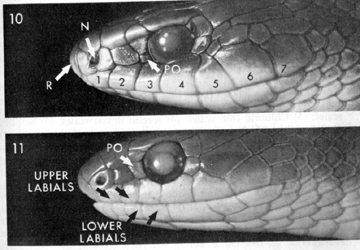 |
If the snake has 7 upper labials (as shown in the picture), you have either a Northwestern garter snake or a
Common garter snake. If you count 8 upper labials it is a Western terrestrial garter snake. The 6th and 7th upper labial scales are higher than they are wide. Another identification tool is their yellow-cream dorsal stripe that extends from the base of the head and a single stripe on each side of its body that is similar in color to the dorsal stripe. These stripes seem to begin on the labial scales. |
Now to distinquish between the Northwestern garter snake and the Common garter snake, you have to turn the snake over and count the scales along the belly, as seen below. There are other characteristics between the two snakes. The Northwestern garter snake usually hads a distinct red, orange, or yellow stripe down the middle of its back, and the side stripes faint or absent. The Common garter snake is the largest of the garter snakes (can grow up to 52" long). It usually has a yellowish or yellow-green stripe down its back with red spots on its side.
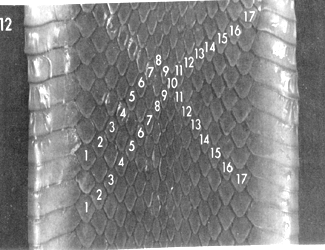 |
Count across diagonally or in a 'V' pattern. You'll get the same number.
17 belly scales = Northwestern garter snake ...There are always some individuals who will be an exception to the rule. If you find one, record the snake's color and markings. |
Photo acknowledgments: RAN=R. A. Nussbaum et. al., Amphibians and Reptiles of the Pacific Northwest, University of Idaho Press, Moscow, Idaho 1983
Home | About Us | How to Participate | Biodiversity Modules | Projects | Maps | News | Resources